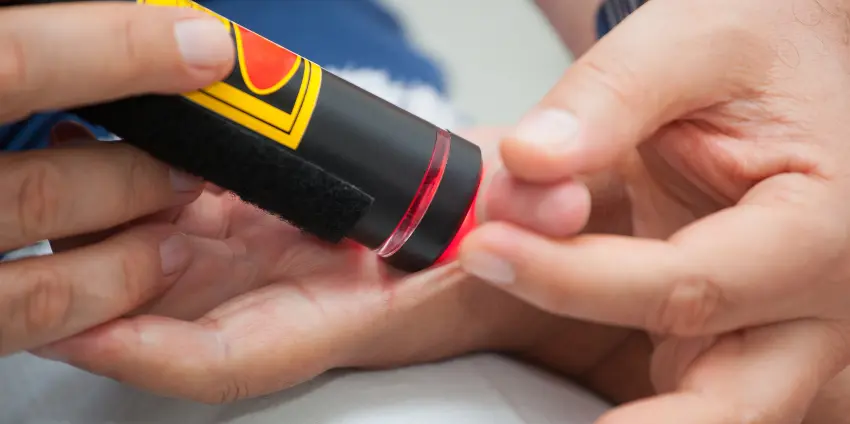Laser Therapy: Illuminating the Path to Pain Relief
Laser therapy, also known as photobiomodulation therapy, has gained significant attention in the medical and wellness fields for its potential in alleviating pain and promoting tissue repair. In this comprehensive blog, we will explore the intricacies of laser therapy and its applications in pain management and healing, covering a range of important sub-topics and points to provide a complete understanding of this innovative treatment modality.
Understanding Laser Therapy
- Definition of laser therapy and its historical background in medicine.
- The principle of photobiomodulation and how laser therapy interacts with cellular processes to promote healing.
- Different types of lasers used in therapy and their specific applications.
Mechanism of Action
- How laser therapy influences cellular function, including the stimulation of mitochondria and the modulation of inflammatory processes.
- The concept of tissue penetration and the delivery of light energy to affected areas.
- Understanding the biological response to laser therapy and its impact on pain perception and tissue regeneration.
Conditions Treated with Laser Therapy
- Chronic pain management, including musculoskeletal pain, neuropathic pain, arthritis, and fibromyalgia.
- Wound healing and tissue repair, such as diabetic ulcers, surgical incisions, and burns.
- Inflammatory conditions, lymphedema, and dermatological disorders.
Treatment Techniques and Modalities
- Different delivery methods of laser therapy, including low-level laser therapy (LLLT), high-power laser therapy, and cluster probe applications.
- Combined approaches, such as the use of laser therapy in conjunction with physical therapy, acupuncture, or chiropractic care.
- Treatment protocols, including session duration, frequency, and the number of sessions required for optimal results.
Benefits and Efficacy
- Exploration of the evidence-based benefits of laser therapy in pain relief, reduction of inflammation, and acceleration of tissue repair.
- Comparison of laser therapy with traditional pain management modalities and its advantages in terms of non-invasiveness and minimal side effects.
- Clinical studies and patient testimonials highlighting the efficacy of laser therapy in various medical and rehabilitative settings.
Safety and Considerations
- Evaluation of the safety profile of laser therapy and potential contraindications.
- Precautions and guidelines for the use of laser therapy in different patient populations, including pregnant women, cancer patients, and individuals with specific medical conditions.
- The role of certified and skilled practitioners in administering laser therapy to ensure its safe and effective application.
The Future of Laser Therapy
- Research trends and ongoing studies exploring the expanded applications of laser therapy, including neurological conditions, sports medicine, and regenerative medicine.
- Technological advancements in laser therapy devices and the potential for targeted, precision-based treatments.
- The integration of laser therapy into mainstream healthcare practice and its potential impact on pain management and rehabilitation.
Conclusion
In conclusion, laser therapy represents a promising path to pain relief and tissue healing, offering a non-invasive and safe approach to address a wide range of conditions. By delving into its mechanisms, applications, benefits, and future potential, individuals can gain a comprehensive understanding of laser therapy and its role in modern healthcare. Consulting with healthcare professionals to explore the suitability of laser therapy for specific conditions is crucial to harnessing its potential benefits effectively.
As the field of laser therapy continues to evolve, it is clear that this illuminating treatment modality holds significant promise in illuminating the path to pain relief and improved quality of life for many individuals.

